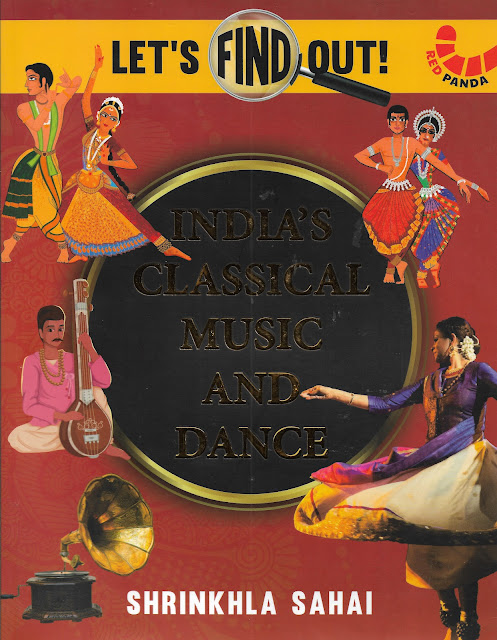Of Ragas and Mudras
India’s
Classical Music and Dance
Shrinkhla
Sahai
Publisher:
Red Panda (An imprint of Westland Publications)
Year:
2021
ISBN: 9789390679065
About the book
Number of pages: 87.
Sections: 3 (Introduction,
Indian Classical Music and Indian Classical Dance).
All pages are in colour and there is an extensive use of
both – illustrations and photographs.
Topic: Not an easy book to come out with - especially
given that many of us would have heard of these arts but few would have clarity
on. And, of course, the potential details that one could venture into.
Presentation: The book carries a informal and non-serious
look. This is welcome considering that many, especially those not associated
with dance and music, have a not-easy-to-explain fear of the classical arts.
Price: 399/-. Very
reasonable given the production quality.
Where I stand
I am neither a performer of Indian Classical Dance or
Indian Classic Music nor have I read on the topic extensively. However, I have
been an ardent rasika – especially
over the recent years during my time at Hyderabad and Banaras.
I am thankful for a lot of opportunities that came my way
– from exclusive concerts in posh clubs to ‘open for all’ events on the ghats.
These opportunities have raised my interests in dance and music and made me
wonder why I had not learnt more of these arts.
Where the book scores well
It clarifies and demystifies terms concerning Indian
Classical Dance and Music that one has been coming across for long. Few of these
we assume we know while a few we have a vague understanding of. The book talks
of how we have assimilated several musical influences through history. It also
brings out how dance-theatre traditions evolved in temples and how ‘baithaks’ are distinct from
‘black-box-concerts’.
The layout and presentation work. This is crucial as these
arts are not much discussed in this manner with younger ones. Photographs and
illustrations are high quality. They help clarify the dance mudras, the music instruments, the
artists and more. Information in the timelines and the tables adds to the
understanding as does the Qissa
Corner (stories!).
The book also puts forth the questions raised – be it on the guru shishya parampara or on the norms, practices and traditions followed. Here it refrains from getting into the activism mode – in other words does not push its opinions. Similarly it does not burden the young readers with problems that plague the worlds of dance and music. Those interested have the option to delve deeper.
Some questions on the book
Would a list of multi-media references have added value?
List of websites, channels, magazines, music and dance institutions that the
ones interested after reading the book could have looked up.
Was there a need to tighten up the editing? Kumar
Gandharva - for example - finds mention in ‘Spotlight’ after he appears in ‘Qissa’. The Nawab of Awadh finds
multiple mentions.
Could the activities’ section have been avoided?
Overall
A very welcome book.
For the readers it is an initiation into the worlds of
Indian Classical Music and Dance. It will also encourage potential others and exponents
of these arts to come up with books which explore these arts further.
Related
posts


Comments
Post a Comment